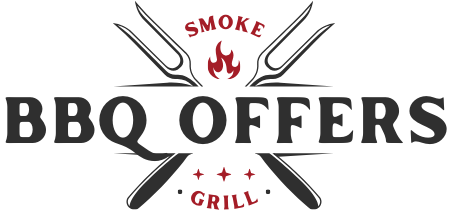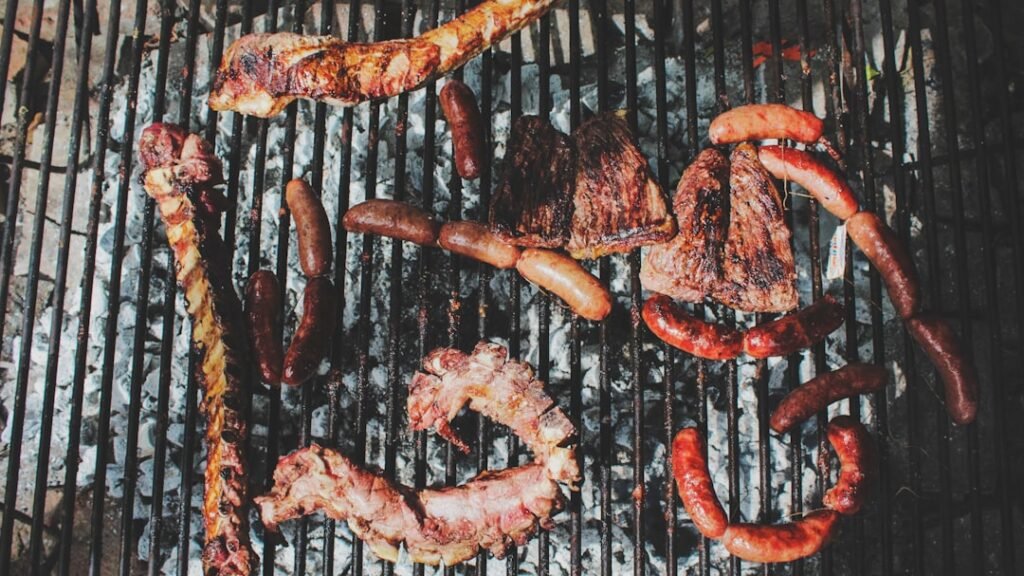Perfecting the Art of Barbecue Ribs

When it comes to barbecuing ribs, the first step is selecting the right cut. There are several types of ribs available, each with its unique flavor profile and texture. The most common cuts are baby back ribs, spare ribs, and St.
Louis-style ribs. Baby back ribs are smaller and leaner, often considered the most tender option. They come from the upper part of the pig’s ribcage and are known for their sweet flavor and delicate texture.
On the other hand, spare ribs are larger and meatier, coming from the lower part of the ribcage. They have a higher fat content, which can lead to a richer taste when cooked properly. St.
Louis-style ribs are essentially spare ribs that have been trimmed down to a rectangular shape, removing the rib tips. This cut is favored by many pitmasters for its uniformity and ease of cooking. Each type of rib has its advantages, so my choice often depends on the occasion and personal preference.
If I’m looking for something quick and easy, baby back ribs might be my go-to. However, if I want to impress guests with a hearty meal, I might opt for spare or St. Louis-style ribs.
Understanding these differences helps me make an informed decision that aligns with my cooking style and the flavors I wish to achieve.
Preparing the Ribs for Barbecuing
Once I’ve chosen the right cut of ribs, the next step is preparation. Properly preparing the ribs is crucial for achieving that mouthwatering flavor and tenderness that everyone craves. The first thing I do is remove the membrane from the back of the ribs.
This thin layer can prevent seasonings from penetrating the meat and can also become tough during cooking. Using a sharp knife, I carefully slide it under the membrane at one end and pull it off, often using a paper towel for grip. After removing the membrane, I rinse the ribs under cold water and pat them dry with paper towels.
This step not only cleans the meat but also helps to create a better surface for my rub or marinade to adhere to. Next, I like to apply a light coat of mustard or olive oil as a binder before seasoning. This may seem unconventional, but it helps the rub stick while adding a subtle flavor.
Once I’ve applied my chosen rub or marinade, I wrap the ribs in plastic wrap and let them sit in the refrigerator for at least a few hours, or ideally overnight. This resting period allows the flavors to meld and penetrate the meat, setting me up for barbecue success.
The Best Barbecue Rib Rubs and Marinades

The choice of rubs and marinades can make or break my barbecue experience. A good rub typically consists of a blend of spices that complement the natural flavors of the meat without overpowering it. My go-to rub usually includes brown sugar for sweetness, paprika for color, garlic powder for depth, and a touch of cayenne pepper for heat.
The balance of these ingredients creates a flavorful crust that caramelizes beautifully during cooking. Alternatively, I sometimes opt for a marinade when I want to infuse even more flavor into my ribs. A marinade can include ingredients like apple cider vinegar, soy sauce, honey, and various spices.
The acidity in vinegar helps tenderize the meat while adding a tangy flavor that contrasts nicely with the sweetness of the honey. Regardless of whether I choose a rub or marinade, I always ensure that I apply it generously and evenly across all surfaces of the ribs. This attention to detail ensures that every bite is packed with flavor.
Mastering the Art of Low and Slow Cooking
| Low and Slow Cooking Metrics | Value |
|---|---|
| Temperature Range | 200°F – 275°F |
| Recommended Cuts of Meat | Brisket, Pork Shoulder, Ribs |
| Typical Cooking Time | 4 – 12 hours |
| Key Equipment | Smoker, Grill, Dutch Oven |
| Popular Low and Slow Dishes | Texas-Style Brisket, Pulled Pork, Smoked Ribs |
One of the most critical aspects of barbecuing ribs is mastering the low and slow cooking technique. This method involves cooking at low temperatures over an extended period, allowing the collagen in the meat to break down and become tender. I typically set my smoker or grill to a temperature between 225°F and 250°F (107°C to 121°C).
This range is ideal for achieving that fall-off-the-bone tenderness that everyone loves. During this process, patience is key. I often find myself checking on the ribs periodically but resist the urge to open the lid too frequently, as this can cause temperature fluctuations.
Instead, I rely on a good meat thermometer to monitor internal temperatures without losing heat. Depending on the cut and size of my ribs, this low-and-slow cooking can take anywhere from four to six hours. The aroma wafting through my backyard during this time is nothing short of intoxicating, making it well worth the wait.
The Importance of Properly Monitoring Temperature
Temperature control is paramount when barbecuing ribs; it can mean the difference between perfectly cooked meat and a dry disaster. I always use a reliable meat thermometer to keep track of both my grill’s temperature and the internal temperature of the ribs themselves. For pork ribs, I aim for an internal temperature of around 195°F to 203°F (90°C to 95°C).
At this point, the collagen has broken down sufficiently, resulting in tender meat that pulls away from the bone with ease. In addition to monitoring internal temperatures, I also pay attention to ambient temperatures within my grill or smoker. Fluctuations can occur due to weather conditions or how often I open the lid.
To maintain consistent heat, I often use wood chunks or charcoal briquettes that burn evenly over time. If I’m using a gas grill, I make sure to adjust burners as needed to keep everything stable. By being diligent about temperature monitoring, I can ensure that my ribs turn out perfectly every time.
Achieving the Perfect Texture and Tenderness

Achieving that perfect texture and tenderness in barbecue ribs is an art form that requires practice and attention to detail. As I cook my ribs low and slow, I look for visual cues that indicate they are nearing perfection. The meat should begin to pull away from the bones slightly, creating a telltale sign that they are tenderizing beautifully.
Additionally, I often check for a nice bark forming on the outside—a dark crust that adds both flavor and texture. Another technique I employ is wrapping my ribs in foil during part of the cooking process—a method known as the “Texas Crutch.” After several hours of cooking unwrapped, I wrap them tightly in foil along with a splash of apple juice or beer for added moisture. This step helps steam the ribs while keeping them juicy and tender without losing any flavor.
After about an hour in foil, I unwrap them again to allow that beautiful bark to form before serving.
Saucing and Glazing Techniques for Barbecue Ribs
Once my ribs have reached that perfect level of tenderness, it’s time to think about saucing or glazing them. While some purists argue that good barbecue doesn’t need sauce, I believe it can enhance flavors when done correctly. If I’m using sauce, I typically apply it during the last 30 minutes of cooking to prevent burning while allowing it to caramelize on the surface.
I often make my own barbecue sauce using ingredients like ketchup, brown sugar, vinegar, Worcestershire sauce, and spices tailored to my taste preferences. The key is to balance sweetness with acidity while adding depth through spices like smoked paprika or chili powder. When applying sauce, I use a brush to create an even layer over both sides of the ribs before returning them to heat for that final glaze.
Serving and Presentation Tips for Barbecue Ribs
After all that hard work in preparing and cooking my barbecue ribs, presentation becomes essential when it’s time to serve them up. First impressions matter; therefore, I take care in how I plate my dish. I often slice between each bone to create individual portions before arranging them on a large platter or wooden board for a rustic touch.
To elevate my presentation further, I like to garnish with fresh herbs like parsley or cilantro for a pop of color. Additionally, serving alongside classic sides such as coleslaw or cornbread adds visual appeal while complementing flavors beautifully. Finally, I always ensure that napkins are readily available—barbecue ribs can be messy but oh-so-delicious!
By paying attention to presentation details, I can create an inviting atmosphere that makes everyone eager to dig in and enjoy my barbecue masterpiece.






